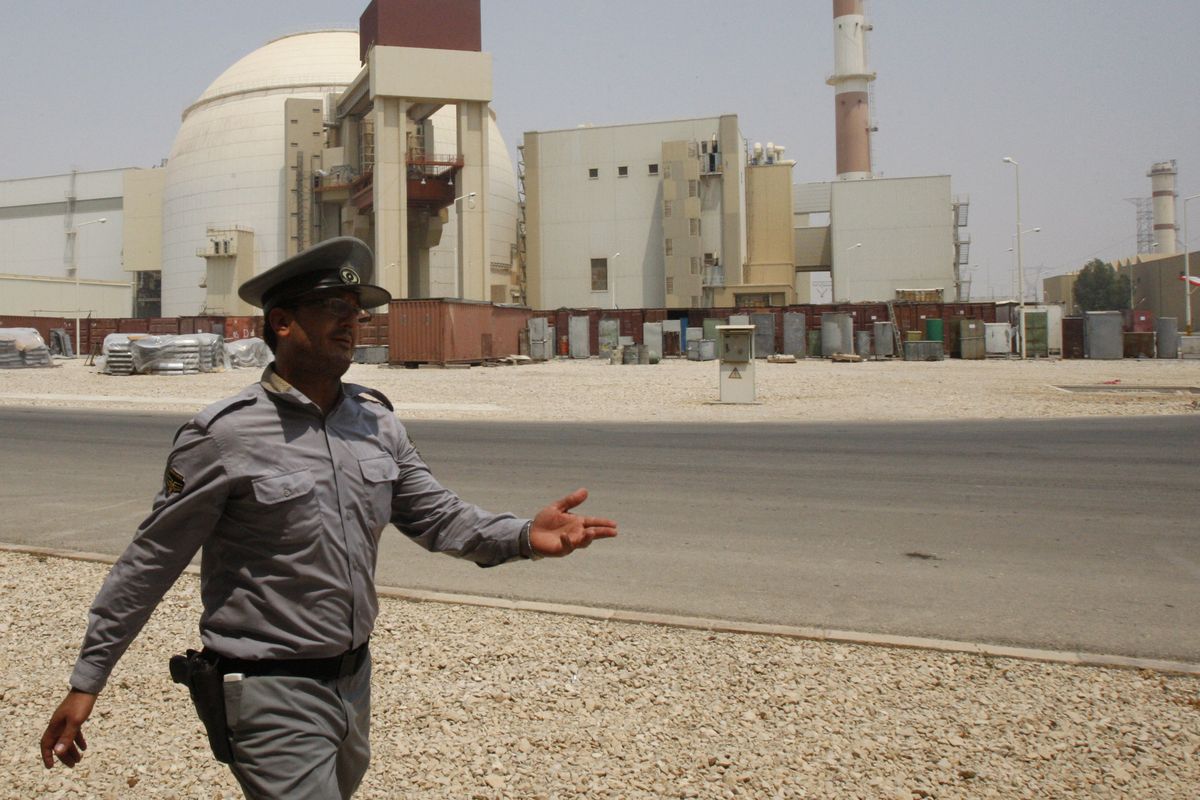Iran nuclear reactor fueling begins
First of 163 rods loaded at facility

BEIRUT, Lebanon – Engineers began loading fuel rods into a nuclear reactor on Iran’s southern coast Saturday, a milestone that puts the long-delayed plant within a few weeks of operation, Iranian state television reported.
Against the backdrop of tightened sanctions that are meant to rein in Iran’s nuclear ambitions, the Russian-built plant has become the center of an international controversy as all sides invest the reactor with a symbolic significance far beyond its ability to produce electricity.
John R. Bolton, the Bush administration’s former United Nations envoy, made waves and set off war jitters last week after he said that Israel was running out of time to bomb the plant before the fuel cells were loaded, or otherwise risk creating a radioactive cloud that would harm too many civilians.
Iran countered with its own threat.
“In that case, we will lose a power plant, but Israel’s existence will be in danger,” said Iranian Defense Minister Brig. Gen Ahmad Vahidi.
Commissioned by Iran’s last shah before the country’s 1979 Islamic Revolution, Bushehr has concerned Western and Israeli officials. Iran could theoretically make bombs by extracting plutonium from the reactor’s spent fuel rods, although Russia has vowed to keep a close tab on the plant and recover any such material and experts doubt such an outcome.
Russian and Iranian officials and dozens of journalists were on hand as the first of the 163 fuel rods were loaded into a water pool next to the main core of the plant as part of a two-week process, official media reported. Inspectors from the International Atomic Energy Agency, the U.N.’s nuclear watchdog organization, will monitor fuel transfer at the plant.
Iran insists its nuclear program is solely for civilian purposes, but Western powers suspect Iran is trying to gain weapons capability.
Obama administration officials have voiced concern that Russia’s role in launching Bushehr could send Iran the wrong signal at a time when world powers are trying to pressure Iran to halt its continued production of low-enriched nuclear fuel. On the other hand, Washington has also shown some support for the plant, arguing that it proves that Iran doesn’t need to produce its own nuclear fuel.
Iran says the delays, political maneuvering and threats that accompanied the Bushehr construction reinforced its determination to master nuclear technology.
“Resistance of the Iranian nation along with their independence-seeking spirit as well as their strong support for their officials have led to the completion of the Bushehr power plant project,” Iran’s Atomic Energy Organization chief, Ali Akbar Salehi, told reporters.
Russia also hopes to prove a point to Western rivals. Angered by a series of U.S. and European trade restrictions imposed on Iran after Russia signed on to U.N. sanctions this year, Moscow vowed to move forward with Bushehr. The plant had been scheduled to operate years ago but was delayed by a series of technical problems and financial disagreements between Iran and Russia.
Salehi told state media that the 1,000-megawatt reactor will begin producing electricity by early September.